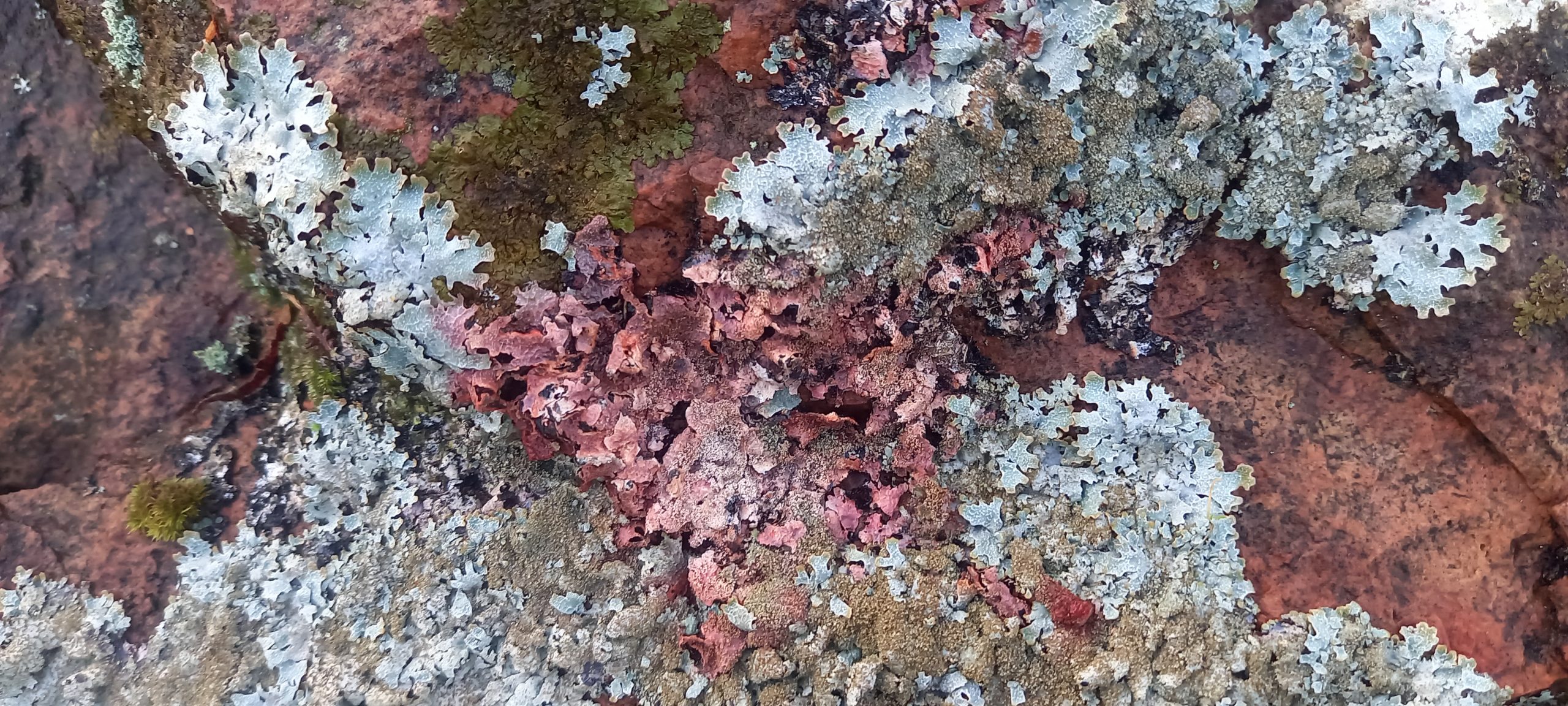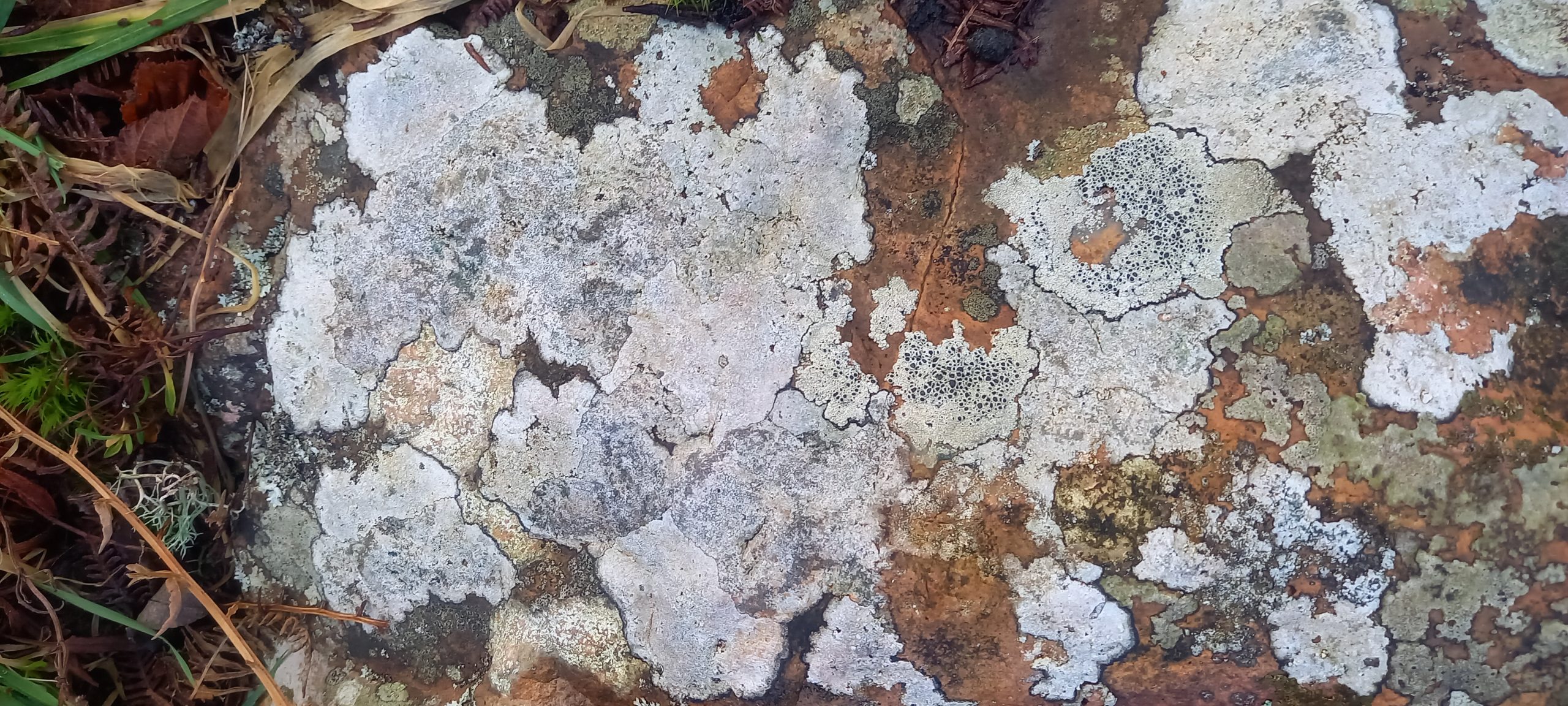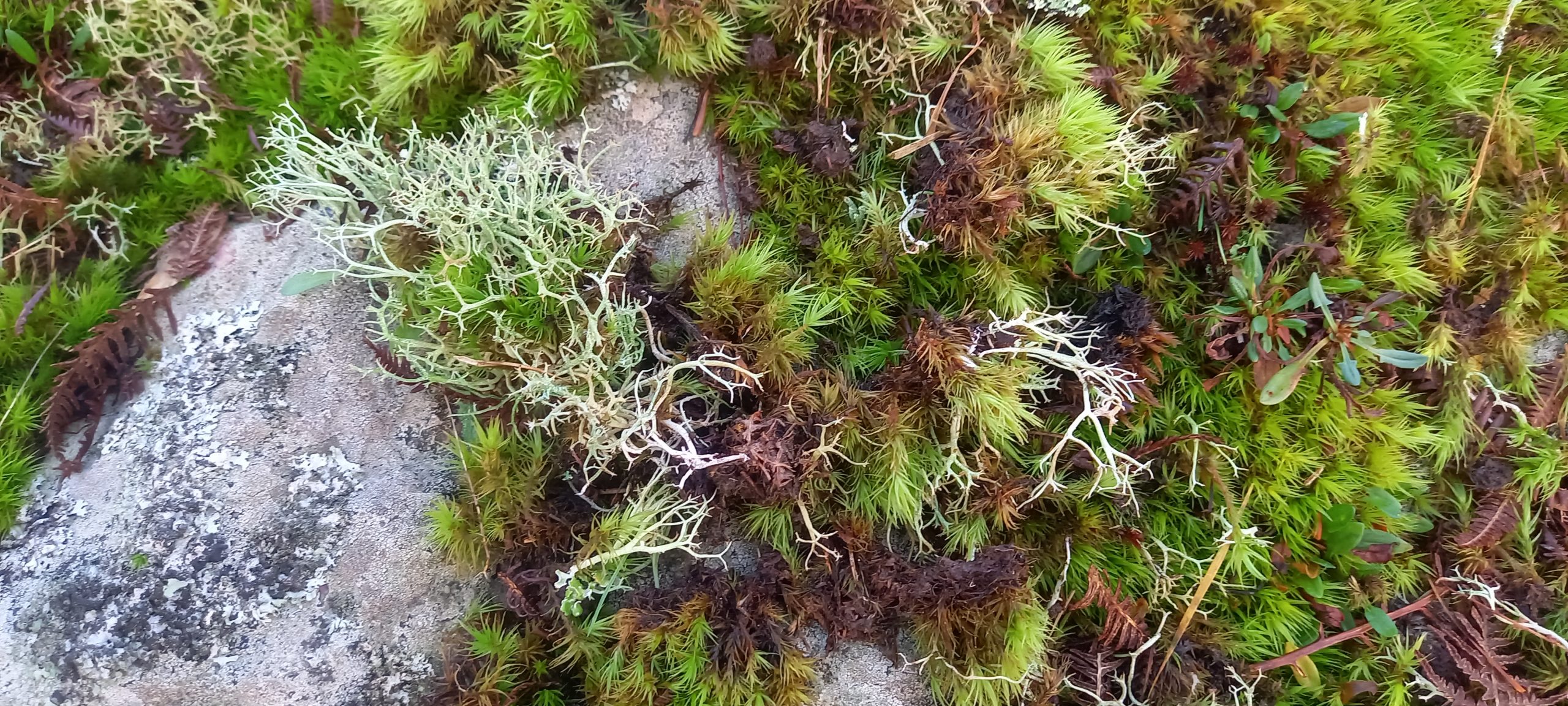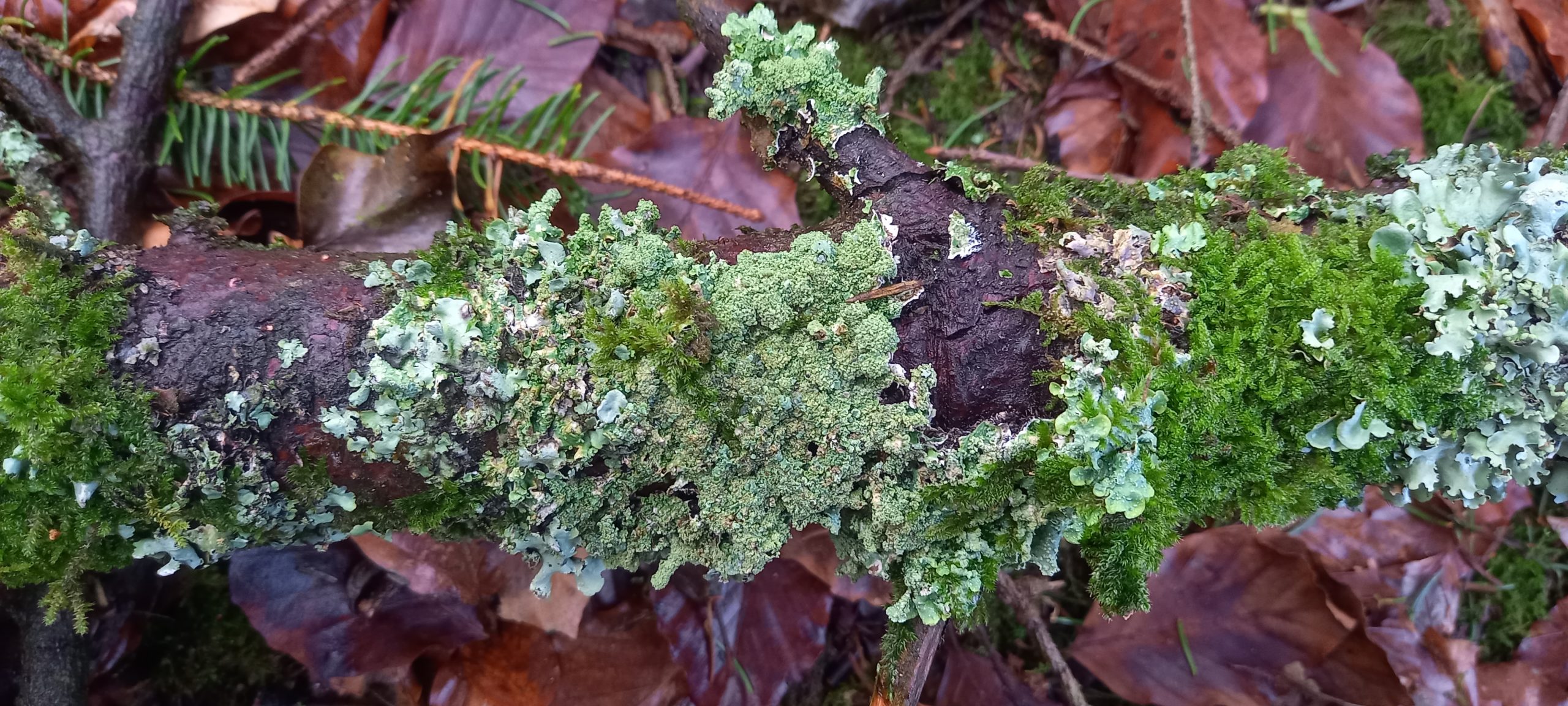
Foliose lichen. Image taken 01/01/2024
Lichens are a stable, mutualistic association between a fungus (= mycobiont), the dominant species in the association, and a green alga or cyanobacteria (= photobiont). The mycobiont provides the photobiont with a safe place to live and grow, and in return, receives sugars from the photobiont which are the products of photosynthesis. When the mycobiont and photobiont join, they both change physically and chemically to become a lichen. The fungus is said to be “lichenized”.

Crustose lichen. Image taken 01/01/2024
Lichens are known in five forms:
- Crustose – ‘crusty’, firmly attached to substrate
- Foliose – ‘leafy’, with rhizines, loosely attached
- Fruticose – ‘bushy’, branching
- Leprose – ‘powdery’, dusty coating, likes shady places
- Squamosa – ‘scaly’, leafy scales

Fruticose lichen. Image taken 01/01/2024

Lichen and bryophyte. Image taken 01/01/2024

